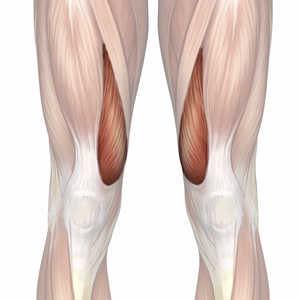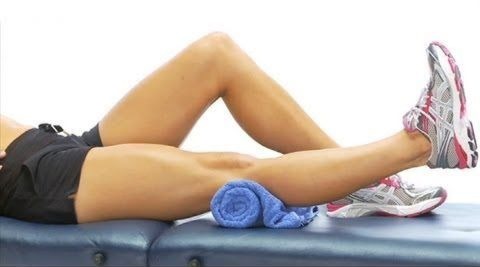Lock the knee. As many of you know, this is one of the foundational principles of Bikram (Traditional/26&2) Yoga and is often misunderstood. When students first hear “lock the knee” they lack the strength to perform the action correctly. It takes time to establish the physical and mental technique of the exercise.
How to Lock the Knee
In order to truly lock the knee, you must first straighten the leg so the femur and tibia are stacked one on top of the other, then you must contract ALL of your quadriceps to hold the bone joints in alignment.
There is one quadricep of particular importance, which is often left out and for many people remains weak. Vastus medialis (VMO) is the innermost quadricep and when strong, helps to keep the patella (knee cap) from tracking to the outside (which can cause knee pain). The VMO is responsible for the last 10-15 degrees of knee extension (straightening) so is integral to executing the balancing postures with integrity.

Identifying Your VMO
Make sure you take the time to connect with this muscle both at home and in studio. At home you can to identify and strengthen VM, by siting on the couch with your leg extended and a small pillow or towel underneath your knee. To strengthen, simply extend (straighten) your knee the last 10-15 degrees. Work up to 3 sets of 10 repetitions and do them daily.

In your practice, use your eyes to keep your mind fixed on contracting this muscle until it fires for you automatically. Listen for the direction to look at your knee in the mirror and do it! Look for your VMO contracting above the knee cap. If you’re unsure or can’t see or feel it contract, then poke it with your finger. Make sure it’s fired up before you move on!
How Injuries Happen
Injuries often happen when practitioners attempt to straighten the knee without contracting the quadriceps muscles. In this case, the knee is pushed back into hyper-extension. Over time this can lead to pain and strain within the knee joint.
To ‘lock the knee’ is an exercise in mindfulness and in strength building. It is not enough to stack the joints one on top of the other, but rather to develop the strength to hold them stacked.